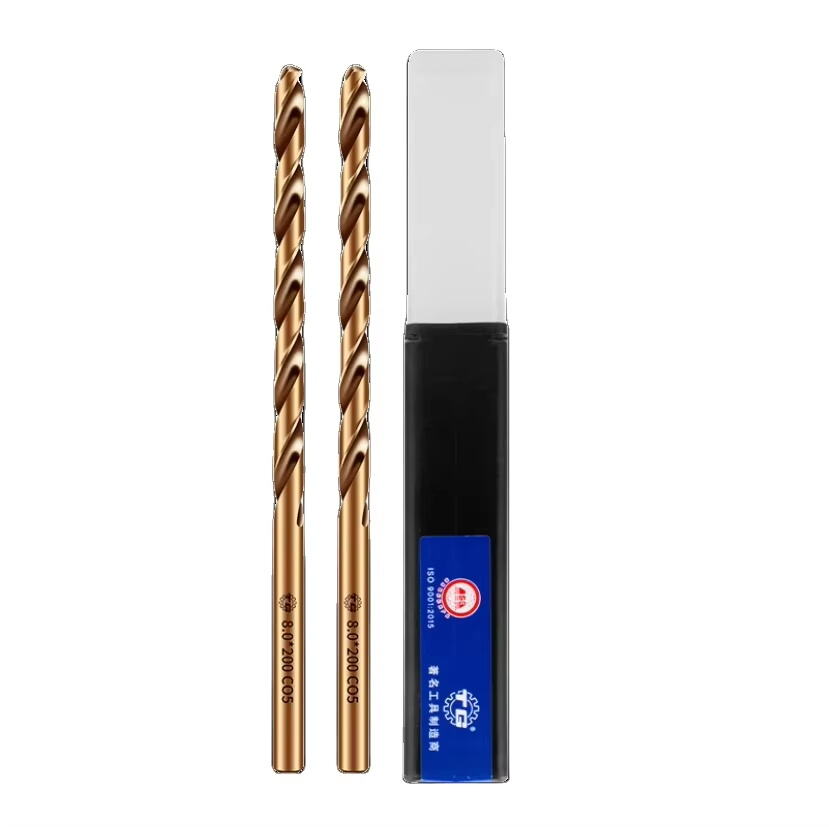What Is Die Steel? Defining the Backbone of Tooling
The Role of Die Steel in Industrial Manufacturing
Die steel forms the foundation for most industrial tooling work and really affects how efficient and good quality the manufacturing ends up being. What makes this material so valuable is its toughness and strength, which lets it handle all sorts of tough situations without breaking down. That's why manufacturers rely on it heavily when they need consistent results day after day. We see die steel used everywhere from mold making to die creation across industries like cars, planes, and household items. Even though conditions can get pretty rough during production runs, die steel keeps performing accurately, which explains why it stays at the heart of so many manufacturing operations around the world.
Core Composition of Die Steel Alloys
At its core, die steel consists mainly of iron and carbon, along with various alloying elements such as chromium, molybdenum, and vanadium. These components work together to boost different aspects of the material's strength and durability. What makes die steel so interesting is that its actual composition changes based on what it needs to do. Take vanadium for instance – adding this element significantly improves wear resistance. When manufacturers really get down to the nitty gritty of these chemical makeups, they can tweak the steel formula to fit exact performance needs across all sorts of industries. The ability to customize like this explains why die steel remains such a go to option in both tooling shops and manufacturing plants everywhere.
Types of Die Steel: Matching Materials to Applications
Hot-Work Die Steels: Withstanding Extreme Temperatures
Hot work die steels maintain their strength and hardness even when exposed to extreme heat, which matters a lot during hot forging operations. The material resists things like thermal fatigue and oxidation that can wreck regular steel, making it much better suited for shaping metals at high temps. Take H13 grade steel for instance it performs really well in these tough conditions because of its special composition that holds up against both wear and heat damage over time. Because they don't break down so easily when subjected to continuous heating cycles, these specialized steels have become standard equipment across many manufacturing plants where parts need to be formed while red hot.
Cold-Work Die Steels: Optimized for High-Pressure Environments
Cold work die steels are built to handle serious pressure situations. These materials get put through their paces when shaping things at normal room temps with lots of force applied. What really stands out about them is how hard they are and how well they resist impacts, which is why they work so great for tasks like punching holes, cutting blanks, and stamping metal parts. Take grade D2 steel for instance it's pretty popular because it finds that sweet spot between lasting against wear and staying tough enough not to break under stress. We see this kind of steel all over heavy manufacturing plants where tools need to last longer without constant replacement. For factory owners concerned about both cost and productivity, switching to cold work die steels often pays off big time in terms of extended tool life and better overall shop performance.
Plastic Mold Steels: Precision and Polishability
Plastic mold steels get specially made so they can deliver precision and those nice polished finishes needed when making plastic product molds. These materials need to hold up well against wear and tear while still allowing for really smooth surfaces, which matters a lot in things like cars and household goods where looks count. Take P20 and S7 steel grades for example these are pretty much industry standards because they work great for injection molding applications. They stand up to constant usage without breaking down and manage to capture all those fine details in the final product. For manufacturers who want consistent quality across their production runs, getting the right mold steel mix is absolutely key to keeping operations running smoothly day after day.
Key Properties That Make Die Steel Indispensable
High Hardness and Exceptional Wear Resistance
Die steel stands out because it's really hard and resists wearing down, which helps tools last longer before needing to be replaced. These characteristics matter a lot in manufacturing sectors where machines get used all day every day, and when tools start breaking down, production slows to a crawl. Research indicates that harder die steels wear away much slower than their softer counterparts, which explains why they're so popular for tough jobs. Less wear means tools stay functional longer, and factories don't waste time stopping operations for constant repairs or swapping out worn parts. For shops running tight schedules, this translates into real savings both in money and productivity.
Toughness and Impact Resistance for Demanding Tasks
Die steel needs to be tough enough to handle those sudden impacts that happen all the time in high stress situations. Take automotive manufacturing for instance, where the machines run nonstop and any material failure means big problems down the line. When die steel is tough, it doesn't crack under heavy loads, so failures during production just don't happen as often. Impact resistance keeps things running smoothly on the factory floor, cutting down on those frustrating machine stoppages that eat into profits and throw off entire production schedules. For plant managers watching their bottom lines, this kind of reliability makes all the difference in maintaining efficient operations day after day.
Heat Resistance and Thermal Stability in Operation
When working with die steel, it needs to hold together even when exposed to intense heat without changing much in terms of structure or properties. The resistance to heat matters a lot if we want consistent product quality across large scale manufacturing operations. Steels with good thermal stability work well through all those heating and cooling cycles again and again, something most industrial processes require since they run hot most of the time. Some tests show certain compositions let die steels handle temperatures around 600 degrees Celsius before showing signs of wear. For parts needing top performance where temperature extremes are common, this kind of stability makes all the difference between smooth running production lines and costly breakdowns down the road.
Main Industrial Applications of Die Steel
Die Casting Molds for Metal Forming
Die casting works by pouring molten metal into specially made steel molds to create parts with very accurate shapes. The level of accuracy matters a lot, particularly when manufacturing things that need to meet strict size requirements. When manufacturers choose die steel for their molds, they're actually extending how long those molds last and making them much more dependable. These steel molds can handle all sorts of punishment from heat and pressure without breaking down. Take the aerospace industry for example, where even tiny deviations from specifications can cause major problems. Car makers rely on this same technology too. Good quality die steel makes all the difference here. Companies save money over time because they don't have to replace worn out molds so frequently while still getting consistently good results from their production runs.
Injection Molds in Plastic Manufacturing
Die steel plays a big role in injection molding since it allows for making those complicated plastic parts that just cant be done any other way. What kind of die steel gets used really affects how good the finished product looks, feels, and lasts over time. Take a look at companies making phones or cars they rely heavily on injection molding because their molds need to create all sorts of detailed shapes while still being super accurate. When manufacturers go for top notch die steel, they end up with fewer rejected pieces and save money in the long run. Most folks in the plastics business will tell you that without proper die steel, there wouldnt be nearly as many durable, consistent products out there today.
Cutting Tools and Precision Punches
Die steel remains a top choice for cutting tools and precision punches because it keeps its edge even after lots of wear and tear. The ability to stay sharp matters a lot in industries like woodworking shops, metal fabrication plants, and regular manufacturing setups where getting precise results day after day counts for everything. Industry pros often stress how picking the correct type of die steel makes all the difference. Good quality steel means longer lasting tools, less time spent on repairs, and better overall performance from machines. When companies invest in proper die steel, they see real improvements in their bottom line too. Less downtime equals money saved, and fewer replacements cut costs over time. That's why so many manufacturers tie their shop floor success directly to what kind of die steel ends up in their equipment.
How to Select the Right Die Steel for Your Project
Assessing Operational Temperature Ranges
Knowing what temperature range a die steel needs to handle is really important for picking the right material. Getting this wrong often leads to early breakdowns because the steel just cant take the heat stress over time. For instance, cold forming operations need different temperature resistance compared to parts that go through heat treatments. The actual working conditions matter too. A die used in high temp environments needs materials that won't warp or crack under those conditions. Industry pros usually look at things like peak temps and how many times the part goes through heating and cooling cycles. This helps keep the steel performing properly without losing its structural strength after repeated use.
Evaluating Mechanical Stress Requirements
The amount of mechanical stress on a die plays a big role when choosing materials for manufacturing. Different types of die steel have their own strengths and weaknesses regarding toughness and hardness, so they work better for certain jobs than others. Take H13 steel for example it's pretty popular among manufacturers because it stays sharp longer and doesn't deform easily under pressure, which matters a lot in processes like die casting or creating molds. Before production starts, most companies run stress tests and analysis to make sure everything will hold up over time. This becomes especially important when dealing with heavy loads where even small mistakes can lead to major problems down the line.
Corrosion Resistance and Environmental Factors
Resistance to corrosion matters a lot when equipment needs to keep working in tough spots where chemicals or moisture are present. When picking die steel, going for options with protective coatings or naturally resistant properties makes a big difference in how long tools last and how well they perform. Take chromium enriched steels for instance these offer great protection against rust and degradation, something manufacturers need when dealing with really harsh conditions. Getting this right about materials means fewer breakdowns from environmental damage, which ultimately leads to better reliability across operations without constant maintenance headaches.
Cost Considerations vs. Performance Needs
Choosing the right die steel involves weighing what we pay upfront against how well it performs over time. Cheaper options might save money at first glance but tend to cost more later on when parts need frequent repairs or replacements. Most experienced engineers recommend looking closely at both the price tag and how long the material will last before making a decision. When evaluating different steels, it pays to consider specific requirements like resistance to wear and overall toughness compared to what the budget allows. This approach helps maintain good financial planning while keeping production running smoothly without constant interruptions for maintenance.
FAQ
What is die steel used for?
Die steel is primarily used in the creation of molds and dies necessary for the automotive, aerospace, and consumer goods industries, among others, due to its durability and precision.
How does the composition of die steel enhance its properties?
The composition of die steel, which includes iron, carbon, chromium, molybdenum, and vanadium, enhances its durability and wear resistance, allowing it to meet various industrial application needs.
What are the main types of die steel?
The main types of die steel include hot-work die steels, cold-work die steels, and plastic mold steels, each tailored for specific applications and temperature ranges.
Why is wear resistance important in die steel?
Wear resistance is crucial in die steel as it prolongs tool life and reduces maintenance costs, which enhances production efficiency in industries with frequent and robust tool usage.
How do I select the right die steel for my project?
Selecting the right die steel involves assessing operational temperature ranges, evaluating mechanical stress requirements, considering corrosion resistance, and balancing cost versus performance needs.


